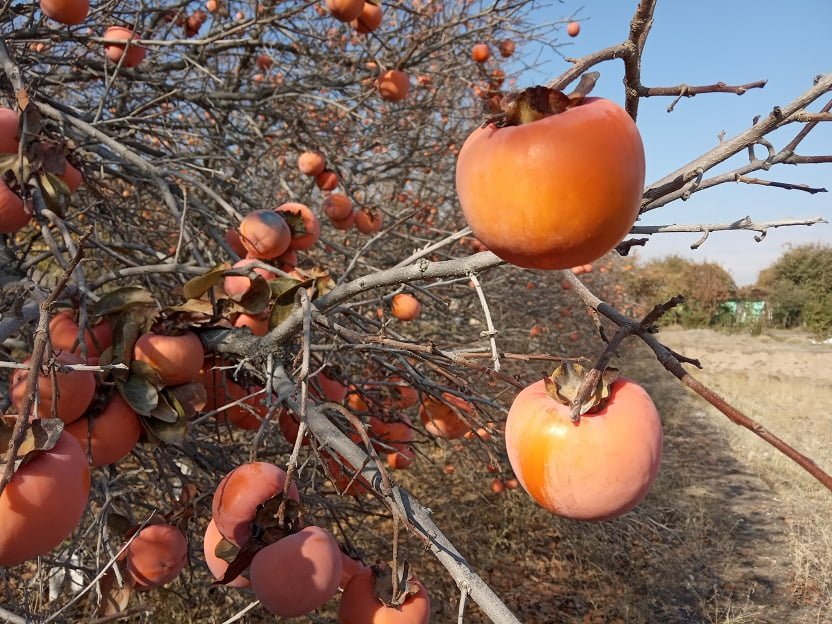Specialists from the Sughd branch of the Institute of Horticulture and Viticulture at the Academy of Agricultural Sciences of Tajikistan harvested over 300 centners of high-quality persimmon from 1 hectare of a young orchard.
They grow local varieties of persimmon Kulchakhurmo (Кулчахурмо), Serkhosili Vakhsh (Серхосили Вахш), Bolazzati Dekhmoi (Болаззати дехмои), and Peshpazi Shirin (Пешпази ширин) in an experimental orchard located in the Bobojon Gafurov district.
Tajikistan began cultivating persimmon in the early 1960s. The first orchards were laid out in central and southern Tajikistan. Gradually, this crop began to spread to other regions. In the Sughd region, the first persimmon orchards appeared only 50 years ago and have been steadily growing. Today, various enterprises of the region cultivate over 300 hectares of persimmon orchards. In addition to the aforementioned varieties, more than a dozen different persimmon varieties are grown in Tajikistan. The most popular and productive varieties are the Denau Sugar (Денауский сахарный), Gosho Gaki (Гошо Гаки), Kheakuma (Хеакума), and Senju Mori (Сенджу мори) as well as the so-called chocolate persimmon.
Successful farmers in various regions of the Republic receive approximately 30-35 tons of persimmons per hectare.
Read also: Most expensive dried fruits from Sughd region (Tajikistan) exported to the US
Persimmons grown in Tajikistan are sold on the domestic market and exported to different countries.

High-quality persimmons in Tajikistan’s trade network can be purchased today at a price of 4.5-5 somoni ($0.43-0.48) per 1 kg. Due to widespread price increases for many basic food items, persimmons today at the largest market Panjshanbe in Khujand can be purchased for 0.50 somoni/kg, which equates to one dollar for more than 20 kg of persimmons. The farmers themselves explain that the catastrophic drop in price for persimmons is due to the low purchasing power of consumers who focus mainly on buying essential products. Persimmons prices in the domestic market are also affected by the difficulties that have arisen this year with the export of these products.
The use of the site materials is free if there is a direct and open for search engines hyperlink to a specific publication of the East-Fruit.com website.




